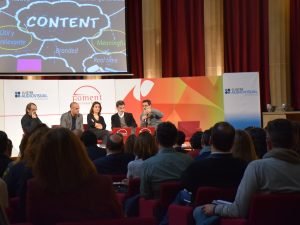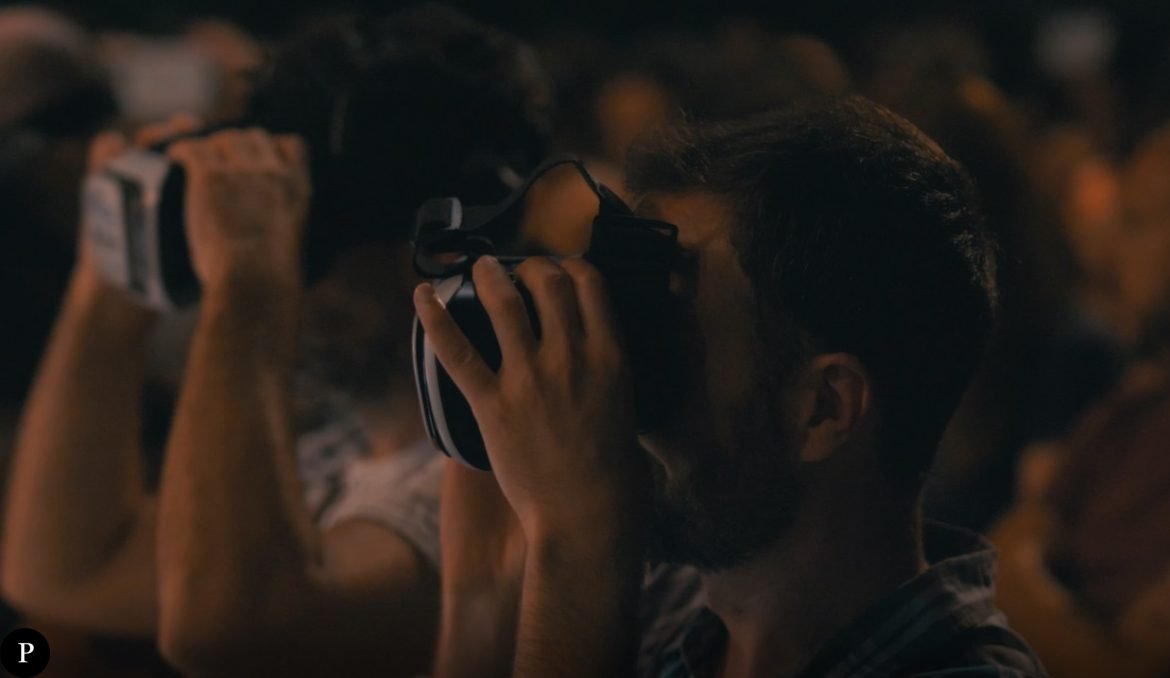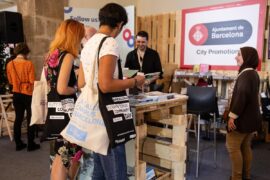[dropcap letter=”T”]
he audiovisual (AV) sector has becomes one of the main tools, maybe the first great tool, in 21st century communication. This is an undeniable fact. In this respect, the AV sector has a motto that will always prevail: content is king. Without content, there is no possibility of communication. Despite technological changes, content will always prevail.
THE AUDIOVISUAL SECTOR EVERYWHERE
The audiovisual sector is everywhere: spearheading promotion campaigns, electoral campaigns, research centres and medical institutions. It spreads across all industrial sectors. We find the audiovisual in literary promos, theatres, dance and opera shows. Today, it is not uncommon to read that The Liceu theatre launches an AV display experience for audiences, a 360-degree experience to live, from inside, La bohème or Coppélia.
Now, more and more formats and devices integrate video. In a short period of time, TV screens have started cohabitating with mobile phones, and analogical TV channels are facing new competition on the internet and the social networks. The latest report of the consulting agency PwC, Entertainment and Media Outlook 2017 – 2021, points out to an increase of videogames (3.5%), internet publicity (6.3%), online video (15%) virtual reality and immersive reality (79.7%).
It goes without saying that everything is moving fast. The breakneck speed of technological evolution is faster, even, than our own capacity to adapt to it. What can we do to avoid being overwhelmed by this phenomenon? How can we turn this challenge into an opportunity? The answer is, again, focusing on content.
We should explore and value all the narrative possibilities, both formal and strategic, that these changes provide us with: this is the key to opportunity. And we should realize that this is one duty not only for the AV industry but also every other sector.
In this respect, it is relevant to say that for four years the Clúster Audiovisual de Catalunya, in tandem with Foment del Treball, organizes the sessions ZOOM Marques, a meeting place of representatives of AV brands, agencies and producers. These sessions are designed to explore opportunities offered by the accelerated evolution of formats and new technologies in relation to brand communication.

FROM BRANDED CONTENT TO BRANDED CHANNEL
In Barcelona this is an extremely interesting issue, as evidenced by the increasing number of professionals from a wide range of career profiles attending ZOOM Marques. The event has truly exceeded all expectations.
On its first edition the event gathered to its fold such diverse businesses as an advertising agency (Ogilvy&Mather), an entertainment production business (Gestmusic Endemol, with tv formats exported around the world, like the successful talent show Operación Triunfo), a Beer company (Damm) and a TV channel (TV3). Targets, audiences, spectators, clients, stood at the centre of the debate. While the argument pivoted around the fact that traditional advertising has lost efficiency, the disagreement arose with reference to possible alternatives. How can we integrate content creation? How can we find milder techniques for our audiences?
In this respect, the following year tackled the transition from sponsorship –traditional method– to producing branded content, featuring Gas Natural Fenosa and the production company El Terrat. Both introduced Cinergía, an initiative promoted by Gas Natural Fenosa, grounded on awareness-raising techniques to achieve energy efficiency, offered, by means of cinema and entertainment, an innovative strategy of brand positioning based on social networks and new tech devices.
The arrival of new tech devices call for new narrative forms. This principle was used, one year later, in a new edition of ZOOM Marques dedicated to analysing the use of virtual reality (VR) and immersive reality for brand communication. VISYON 360, Antaviana Films, Metropolitana and Createl introduced their 360-stereoscopic video productions, VR packaging, billboard advertising, etc. Iberdrola explained its biggest VR gamble for its campaigns. “Nowadays it is not easy to make an impact on people but VR really hits home”, claims its digital & social media director, Carlos Fernández, and adds: “Now, I would like to go beyond that: from a shocking experience to a useful experience”.
The new strategy pushes marketing directors to go one step further from the great campaigns and opt for the always on (the non-stop supply of branded contents)
And a useful experience formed the backbone of the debate in the following 2017 edition. This edition analysed the brand strategies of choice for creating their own audiovisual content: digital magazines, online TV formats, etc. “The new revolution is the disembarkment of TV on the internet”, claimed Carlo Rombola, from Grup Lavinia, who introduced the cases of Suez TV, Sabadell TV and Europarl TV.
The new strategy pushes marketing directors to go one step further from the great campaigns and opt for the always on (the non-stop supply of branded contents). The case of Nestlé TV is significant in that it has incorporated an online video line, through Youtube channels, dealing with insightful topics that transcend even the importance of the products themselves as they touch upon food- and health-related issues.
The ALMA project, produced by the agency &Rosàs, anchored by Beatriz Bahima, from Obra Social La Caixa, is another interesting example. The project aims to visualise the depth of the social projects sponsored by Fundació La Caixa, as they have gone virtually unnoticed so far. To this end, ALMA offers content of interest based on video.
What is the conclusion we can reach, after all these editions of ZOOM marques? Difficult to say. Well, there is still so much to do. “One thing is sure –said Carlos Ortet from the agency Zoopa– from now onwards, brands are bound to produce their own content.” But then again, who isn’t?, we may wonder.
















